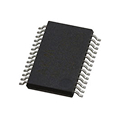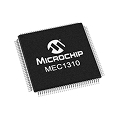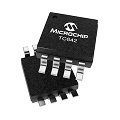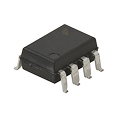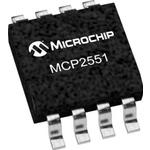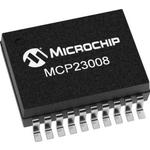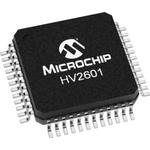Interface electronic components (often called interface integrated circuits or ICs) manage how systems talk to each other. They translate voltages, protect signals, and bridge standards so data moves cleanly between boards, cables, and modules. From motor controllers to cloud gateways, that link matters. Online Components is an authorized distributor with reliable stock, U.S.-based shipping, and quick turnaround that gives purchasers confidence from cart to dock.
Our selection spans RS-232 and RS-485 transceivers, Controller Area Network (CAN) and Local Interconnect Network (LIN) transceivers, Universal Serial Bus (USB) controllers and hubs, Ethernet physical layer (PHY) devices, level shifters, digital isolators, Inter-Integrated Circuit (I²C) expanders, serializer/deserializer (SerDes) bridges, retimers, redrivers, and clock buffers. These are available in standard packages and temperature grades.
Buyers typically include purchasing teams, hardware engineers, test engineers, and maintenance leads building industrial controls, vehicles, network gear, and connected devices.
How to Choose the Right Interface Electronic Components
Start with protocol and performance. Match the standard your system needs (such as RS-485 versus CAN versus Ethernet) with your target data rate, node count, topology, and cable length so the physical layer doesn't limit throughput or stability. Next, align electrical domains: confirm supply voltage and logic thresholds, then weigh protection features like electrostatic discharge (ESD) rating, surge tolerance, common-mode range, and whether galvanic isolation is required for safety or noise resilience.
Environment and fit come next: operating temperature, package style (SOIC, TSSOP, QFN), pinout, and layout constraints can decide between near-equivalents. For regulated spaces, check certifications such as AEC-Q100 for automotive, reinforced isolation ratings, or interface-specific compliance notes in the datasheet.
Popular Applications for Interface Electronic Components
These devices appear anywhere signals cross a boundary. Industrial automation uses RS-485, isolated CAN, and IO-Link bridges for drives, sensors, and Programmable Logic Controller (PLC) backplanes, while building systems run long cables that benefit from noise-tolerant links.
Automotive and transportation deploy CAN and LIN for control networks, plus Ethernet PHYs for Advanced Driver-Assistance Systems (ADAS) and infotainment backbones. Networking and telecom rely on Ethernet, Peripheral Component Interconnect Express (PCIe) redrivers, and clock buffers to keep eye diagrams clean over backplanes.
Consumer, computing, and IoT designs depend on USB controllers, level shifters, and I²C expanders to connect peripherals without glitches.
Why Buy Interface Electronic Components from Online Components?
Online Components pairs an electromechanical focus with U.S.-based inventory, fast shipping, and screen-ready pricing that keeps purchasing straightforward. Every interface IC comes from authorized suppliers, creating clear traceability for audits and quality plans. Our website supports precise parametric filters, accurate specification views, and smooth checkout, while our customer service team helps with quotes and alternates when timelines get tight. Keep your build moving: search, compare, and buy interface electronic components today.
Interface Electronic Components: What You Need to Know
When do I need galvanic isolation?
Use isolation when grounds can't be tied, when safety standards call for it, or when large common-mode noise threatens data. Digital isolators and isolated transceivers break ground loops and lift system immunity without bulky transformers.
RS-485, CAN, or Ethernet: How do I choose?
Pick RS-485 for long, multidrop, moderate-speed links in harsh plants; CAN for event-driven control networks with built-in arbitration; and Ethernet for higher bandwidth, easy IT integration, and broad tooling support.
What does an ESD rating tell me?
It states how much static discharge a device can tolerate at its pins during handling or operation. Match the rating to your assembly flow and the risk at the connector. Front-panel ports usually need higher margin.
What is a level shifter, and when is it required?
A level shifter translates logic families (say, 1.8 V sensors to a 3.3 V microcontroller) so signals meet valid thresholds. Use it whenever logic levels differ or when a bidirectional bus like I²C must move between domains.
contact us
 English
English
 Chinese
Chinese
 Italiano
Italiano
 Portuguese
Portuguese
 Deutschland
Deutschland
 French
French
 Russian
Russian
 Japanese
Japanese
 Turkish
Turkish
 Korean
Korean
 Spanish
Spanish

